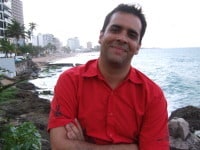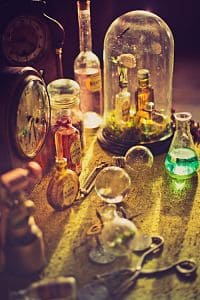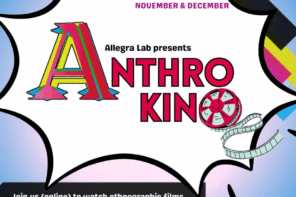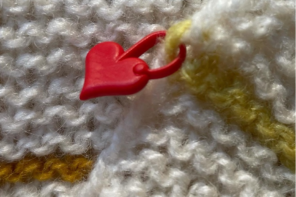Allegra: Welcome to Allegra, Carlo! We wanted to talk to you as the convener of the innovative “laboratories” of the EASA Conference in Tallinn, July 31-Aug 3. As a member of both the Scientific and Local Committee, you are wearing several hats, though – can you tell us a little bit about yourself and your background, and how you came to work in Estonia?

I did my graduate research project at the University of Manchester where I completed my doctorate in Social Anthropology using Visual Media in 2007.
I had visited Estonia in the course of my graduate research to attend the ethnographic film-festival held in Tartu. Estonia is known in the ethnographic film-making community for its two annual ethnographic film festivals – Parnu and Tartu. Some of the films featured in those programmes are broadcast on television. For someone like myself, interested in visual anthropology and ethnographic film-making, this is very significant. Estonia has a population of 1,3 million and when you consider the proportion of film-festivals held in the country and the access that documentaries have to television, this sends a message that Estonians are not only familiar with ethnographic cinema, but consume it regularly. This really appealed to me and I had Estonia in my sights since my first visit. I joined the Department of Social & Cultural Anthropology of Tallinn University in 2009 and have been enjoying every day of my experience here.
A: I was wondering about the origin of the “laboratory stream”, as the EASA homepage calls it. It says that there were different inspirations, and they all seem quite plausible, but I am curious about the process of actually conceptualizing this new format. Was it a “Eureka” moment somebody had, or had this idea been in the works for a while? Do you know any other anthropological event that has included something similar?
C: Many thanks for this question. The “Laboratories” are a component of the conference that we are particularly proud of and we are really excited about its possibilities. There was no real “Eureka” moment. Like many of our programmes and ideas they grown out of process of talking, discussing, and trying stuff out. You must look at the development of our department as a conversation that is occurring in a university and a city that has a disproportionate amount of designers, musicians, architects, poets, translators, gallery organisers, dancers, film-makers, activists, DJs, graffiti artists, etc. Tallinn has a very healthy art gallery scene, community art initiatives, art spaces, loads of independent music is produced here, and it has in general a very active culture scene. A lot of this enthusiasm got invigorated in 2011 when Tallinn was European Capital of Culture. This year the European Capital of Culture is our neighbour capital Riga, which is very exciting for us in Tallinn.
At an institutional level, the Social & Cultural Anthropology Department is housed within the Estonian Humanities Institute. Our colleagues are Comparative Literature, Philosophy, Semiotics, and Asian Studies. The building next to ours is the Baltic Film & Media School (BFM), the largest film school in the Baltics. In fact, this year we are going to inaugurate an MA Course in Audiovisual Ethnography, in collaboration with the Documentary Arts MA of the BFM (more info here). Also, there is a lot of traffic of students and staff going on between the Estonian Humanities Institute and the Estonian Art Academy. The picture that I want to set-up for you is that the general environment in the city and at Tallinn University fosters ideas and projects like the Laboratories. We have many graduate researchers that collaborate with artists and photographers, others are professional artists and musicians, and we also have researchers whose first degree is in the arts. And of course, we have a batch of undergraduates that are very receptive and highly motivated to engage with the idea of trying out non-discursive ways of carrying out research – sound recordings, film-making, choreography, sculpting, etc.
For a few semesters now, we have been discussing and thinking of the possibility of organising an event that would bring together the interests and skills of designers, architects, sound artists, visual artists and anthropologists. We observed a growing trend of anthropologists using different kind of media to articulate their research – cinema, sound art, design, painting, installations, amongst others. We drew inspiration as well from anthropologists that work in museums and have the task of fashioning an ethnographic narrative by designing a space. In a parallel fashion, our artist colleagues and friends in Tallinn rely on methodologies and texts associated with anthropology. When we were selected to host the EASA, we figured that this is probably the best opportunity we’ll have to put together a programme like this.
The interactive component of the Laboratories came up during our EASA brainstorm meetings. We figured that an interesting challenge would be to ask the Laboratories to create something on-site rather than come to Tallinn with a finished presentation. This works on multiple levels; my favourite is the opportunity to generate an ethnographic moment where the knowledge of it is created in a simultaneous process of engaging with it, experiencing it, and documenting it. From this angle, one of the biggest challenges for the Lab conveners is how to strike a subtle and creative tension between authoring a happening, but allowing the happening to take different shapes and forms through its improvisation. On a general level, I hope that Labs will generate a reflection on the nature of ethnography, to look at Anthropology differently, and be inspired to new ways of looking at the world.
As far as precedents are concerned, of course, we are aware that poster sessions and film programmes are staple fare in Anthropology conferences today but, at the time of brainstorming the Laboratories, we were not familiar with similar programmes in other Anthropology conferences. Since sending out the Call for Laboratories, we have learned that the AAA accepts installations as part of their proceedings. Unfortunately, we have not had the opportunity to meet the conveners of the installation programme for the AAA but we would be very keen to liaise for future collaborations.
A: Allegra as a project also proudly carries the “laboratory” title, to indicate its character as emergent. One of our slogans is that “Everything about this site is experimental”, and we are trying to connect people and ideas, as well as probe and challenge the boundaries of conventional formats. But Allegra is still largely virtual, and your laboratories are embodied, sensory, ambulatory, what have you. Were there any considerations to whether such laboratories could be undertaken or maintained even between conferences?

However, the idea for the Laboratories received immediate and unanimous support from the EASA’s Executive Committee, not an instance of hesitation or doubt. We are also pleasantly surprised to receive close to 60 Laboratory proposals. We never expected such an amount and were initially overwhelmed by such a response. I think that we tapped into something that anthropologists were secretly waiting for. This is a good sign. An interesting challenge for us and the Laboratory conveners will be technical issues. Each Laboratory is unique and has specific technical, temporal, and spatial requirements. We have assembled an excellent team of volunteers to address the needs and requirements of each Laboratory.
As for maintaining Laboratories in between conferences, this is an issue for the Laboratory conveners to address. All the Laboratories in our stream are live events – akin to a performance or happening. They really cannot be reproduced integrally, but are dependent on the constellation of circumstances, people, and technical equipment on site at the time. I think it would be fascinating if Laboratory conveners would assess the merits of their Labs and consider different venues and alternative ways to present their Labs in other contexts. I think that this would be the ideal way to give continuity to the Labs.
A: Other panels might produce edited volumes, or special issues. Will there be documentation of the laboratories as well? How far, do you think, can the laboratories really push (or even change) professional conventions? I ask because it’s a long-standing complaint of, for example, visual anthropologists, that their films are not given the same recognition as an academic paper, no matter how much insight they generate.
C: This question is central to the continuity of the Laboratory programme and to assessing their value and role within institutionally supported Anthropology events like the EASA. Our hope is that this first Laboratory stream will become staple fare for the EASA and other Anthropology conferences. The fact that the reception, so far, has been overwhelmingly positive is an indicator that there is a need and a demand for projects like these within Anthropology. In simple terms, Laboratories represent an addition to the conference format and do not represent a radical revision of the conference. One could argue that the spirit of the Laboratories responds to the already accepted format of films and posters in conferences. The main challenge, in my view, is to encourage assessment committees to acknowledge the contributions that these Laboratories make to anthropological discourse and to the broader social and political narrative.
As for documentation of the Labs, this is up to the conveners of the Labs. As I mentioned earlier, each Lab is unique and some would be easier and more appropriate to document than others. That is, each one taps into a specific sensorial experience, which may be problematic when trying to document it. That said, given the novelty of the stream I am sure that the conveners will do their best to document their events. Also, there is no reason to not consider putting together an edited volume or special issues that reports and engages with the Laboratories that were featured at the conference. This option is on the table, but it is one of our post-Conference reflections.
Our Call for Laboratories has also attracted conveners from outside the Anthropology community. This is really amazing because the artists that are convening Laboratories are not able to “translate” credit of presenting at the EASA to their respective disciplines. This is analogous to how many anthropologists in Europe do not always get credit for work done in galleries or art events. This is extraordinary, in my view, because it speaks to the fact that Laboratories have tapped into a vein (not sure yet of what exactly), into a curiosity, an energy, a need for researchers and practitioners to expand the conference format beyond the single authored power pointed paper read presentation.
Regarding films getting recognition, I would like to take this opportunity to mention that this edition of the EASA will feature a high quality Film Programme. You can find the list of selected films here. The Local Committee has secured a professional cinema hall inside the conference venue, with surround sound and a professional projector exclusively for the Film Programme. We are doing our best to secure that all the directors of the films are in attendance to engage with the audience after their screenings. We are doing this special effort to raise the profile of films within EASA and give them the treatment and credibility they deserve.
A: A number of the laboratories encourage interaction with a public, on the university campus and beyond. Do you think people will react well when they find out that these playful activities are performed by academics attending a conference? In a time when many of us are pressured to justify the money invested in higher education by doing more applicable and “useful” research, is it not risky to turn towards formats which do not look like traditional academic pursuits at all?
C: I think that people will react very favourably to the Labs that are more physical and playful. For us, a conference is a meeting of friends, a chance to make new friends, an opportunity to exchange, and discuss future plans. A successful conference cannot be boring nor can it fuel competitive spirits where delegates are struggling to impress each other – frankly we would not be hosting the EASA if we figured that it would not be fun and exciting. We have put a lot of effort into our social events, selected a great lunch menu, in a campus that is in the middle of a dynamic and really cool city, in order to ensure an engaging, stimulating, and memorable event. We see the Laboratories as part of a playful and carnivalesque atmosphere that we are after for the conference.
Regarding the keyword “useful research” in relation to Laboratories, this is a contentious term in Social Science and Humanities research in general because the terms of the “use-value” of any research project is context dependent. If I were to be in an arguing mood, I could suggest that Laboratories have a very high-impact factor on the proceedings of the conference and its participants. Laboratories are designed to be experience-rich and practise-based ethnographic events. Laboratories connect to a different kind of conference exchange than what is at stake during a 20 minute paper reading. If the format of the paper presentation is modelled on the lecture, designed to foster a debate, a discussion on the comparative dimensions of the research, to exchange references; then the Laboratories are designed around a collaborative experience of all attendants participating to create a meaningful experience. I would contend that this format speaks to different aspects of the ethnographic project – i.e., the acknowledgement that anthropological knowledge is collaborative, practise-based, experience-rich, multi-sensual, and multi-layered. The goal here is for each Laboratory participant to walk away from the Lab with their own story to tell. The story they take with them can inform their methodologies, writing style, their pedagogy, their engagement with their city, consider new themes and approaches, or just be exposed to a new skill.
A: There are now sixteen laboratories – an impressive number for a new format. What criteria did you apply to select the ones to include into the conference program?

But as it goes with these decisions, it is the result of compromises and negotiations. We had a great team of people deciding the Laboratories, including external reviewers, and we are confident that we have made a nice selection that represents a wide variety of activities and engages across a wide-range of ethnographic issues.
A: Which of the laboratories is your personal favourite, if I may ask? I am particular to “Tallinn, Awry”, probably better called an “ambulatory” than a laboratory, since it mostly consists of walking.
C: Yes, “Tallin, Awry” is a mobile Lab and we are looking forward to it. Another Lab that is ambulatory is “Knowledge of Space” convened by Matiss Steinerts of Riga Stradins University. Both of these Labs promise to address the experience of place and space in opposition to the well-known Euclidean and cartographic representation of space that has dominated modern anthropological thought.
But I do not have a personal favourite. Each one is so unique with a different set of ambitions that it will be very hard to choose which one to attend. One Lab that will not have timetabling clashes with the other Labs is “And when the policeman comes, will he dance with us?” convened by Adomas Lapinskas of Sodertorn University. Its short abstract is:
You are invited to participate in the collaborative music performance in the public space of Tallinn. We come out at night, and play music together. If you can not play/dance/sing – even better! You will have new things to discover. The location/time will be announced prior to the event.
If there is one Lab that I think I will be able to attend for sure, it’s this one.
A: With the laboratories and the new format for the Young Scholars’ Forum, this year’s EASA promises to be a highlight on the conference circuit! We wish you all the best, and I promise that ALLEGRA will be participating with particular enthusiasm!
Many thanks for the interview and for the opportunity to write to Allegra. I am a fan of the website and it has been a honour to be featured. Looking forward to meeting you in person in Tallinn!









